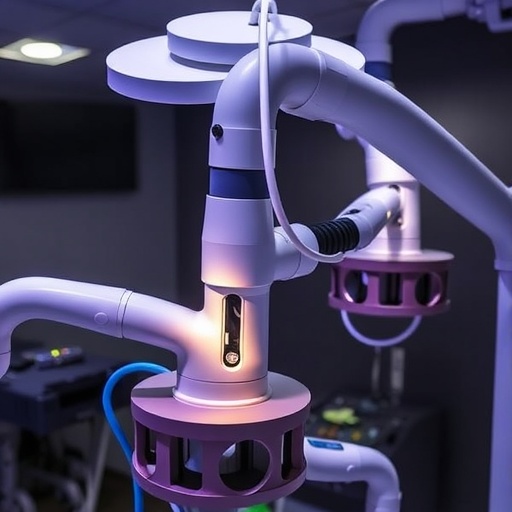The emergence of the da Vinci single-port robotic platform signifies a monumental shift in the realm of minimally invasive urological surgery. This innovative technology addresses the longstanding ergonomic and technical shortcomings associated with traditional single-site surgical methods. By facilitating complex procedures through a singular incision, the single-port robotic system offers unparalleled dexterity, optimized spatial maneuverability, and enhanced aesthetic and peri-operative results. Surgeons are now equipped to perform intricate operations while minimizing the typical complications associated with open surgery, ensuring a safer and more effective approach to patient care.
As the adoption of the single-port robotic platform has surged, its applications have expanded across a multitude of urological scenarios. The technology has been successfully utilized in performing robot-assisted radical prostatectomies, which have historically required more invasive techniques. Moreover, procedures like partial nephrectomy and nephroureterectomy benefit from the precision afforded by the single-port system, allowing surgeons to operate with improved visualization and control in confined anatomical spaces. This advancement not only enhances surgical efficacy but also reduces the trauma experienced by patients.
A standout feature of the single-port robotic approach lies in its ability to facilitate reconstructive surgeries, such as pyeloplasty and ureteral re-implantation. Traditionally, these reconstructive procedures posed significant challenges due to the complexity and delicate nature of the required manipulations. The single-port system streamlines these tasks, enabling a more precise and less invasive technique that can potentially minimize post-operative complications and hasten recovery times for patients.
Innovative access techniques, including the single-port transvesical approach and low anterior access strategies, have emerged to further enhance the capabilities of single-port robotic surgeries. These methods allow surgeons to conduct regionalized surgeries over multiple quadrants of the abdomen without the necessity of repositioning the patient or re-docking the robotic platform. This efficiency not only conserves valuable operating room time but also contributes to a smoother and less disruptive surgical experience for patients.
Patient recovery following single-port surgeries has shown significant improvement, with many experiencing reduced morbidity and expedited healing times. The streamlined nature of these procedures often leads to shorter hospital stays and greater patient satisfaction. In many cases, the implementation of opioid-sparing protocols has been made possible, promoting a more holistic approach to pain management and enhancing patients’ overall recovery journey.
The ergonomic design of the single-port robotic platform ensures that surgeons can maintain optimal posture during prolonged procedures, thus reducing the physical toll on the operator. This advanced technology allows for a more intuitive and user-friendly experience, enhancing the surgeon’s capabilities while interpreting complex laparoscopic visuals. The ability to navigate intricate anatomical landscapes with high precision fosters confidence among surgeons, resulting in a pronounced impact on surgical outcomes.
As training programs continue to develop, the integration of the single-port robotic system into urological curricula is becoming more prevalent. Aspiring surgeons are given the opportunity to familiarize themselves with this cutting-edge technology, fostering a new generation of specialists well-equipped to embrace minimally invasive techniques. Continued education surrounding the unique benefits and complexities of single-port surgery is essential for fostering strong surgical practices.
The refinement of minimally invasive surgical solutions through the da Vinci single-port robotic platform may signal a paradigm shift in urological practice. As surgical methodologies advance, the potential for improved patient outcomes and decreased recovery times becomes increasingly viable. Such a transition not only benefits patients but also aligns with the broader healthcare goal of enhanced efficiency and reduced surgical risks.
While challenges remain in the adoption and implementation of the single-port system across various hospitals and practices, the momentum behind this technology is undeniable. The ongoing evolution of robotic surgery continues to inspire both clinicians and patients alike, opening new avenues of exploration and innovation. The exploration of single-port techniques may pave the way for further advancements in minimally invasive surgery, reinforcing the commitment to developing state-of-the-art surgical strategies.
As further research unveils the long-term implications of the single-port robotic platform, the expectation is that its utility will only expand, leading to innovative solutions tailored to patient needs. The versatility and adaptability of the platform hint at a future where complex surgeries can be performed with enhanced efficacy, setting new benchmarks for patient care in urology.
In summary, the single-port robotic platform stands as a testament to the convergence of technology and surgical proficiency. Its capacity for enhancing surgical practice and improving patient experiences encapsulates the ongoing progress within the field of minimally invasive surgery. As technology continues to advance and surgical techniques evolve, the future of urological surgery appears brighter than ever.
The journey towards a more refined and effective approach to surgical care continues, and the single-port robotic platform is poised to play a pivotal role in transforming the landscape of urological surgery. This technology not only symbolizes the potential for innovation but also embodies the commitment of the medical community to harnessing advances in technology for the betterment of patient health and recovery.
The integration of single-port robotic surgery into standard practice heralds a new era in urological procedures. By challenging traditional surgical methodologies and setting new standards for minimally invasive surgery, this platform encourages surgeons to rethink how complex procedures can be approached in today’s evolving medical landscape. The future of urological surgery has arrived, and with it comes the promise of improved patient care and surgical excellence.
Subject of Research: Single-Port Robotic Surgery in Urology
Article Title: The current landscape of single-port robotic surgery in urology
Article References:
Biasatti, A., Soputro, N.A., Porpiglia, F. et al. The current landscape of single-port robotic surgery in urology. Nat Rev Urol (2025). https://doi.org/10.1038/s41585-025-01081-z
Image Credits: AI Generated
DOI: 10.1038/s41585-025-01081-z
Keywords: robotic surgery, minimally invasive surgery, urology, single-port system, da Vinci system, surgical advancements, patient recovery, surgical techniques




